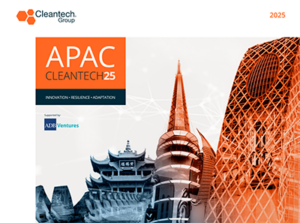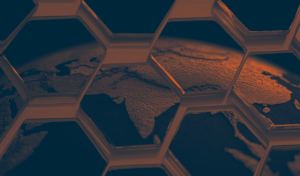Postcard Perspectives from the Asia-Pacific Region | Southeast Asia | Part II
In this quarter’s Postcard Perspectives, our guest contributors were reacting to the open questions:
What kind of year do you expect in 2025 for cleantech, from your perspective, from where you are in the world? What trends/topics are you particularly paying attention to, and why?
In Part I we profiled interesting comments from our network in China and India. This issue brings us insight from a number of Singapore-based investors, whose interests and perspectives are pan-regional.

“2025 could be a defining year for climate tech in Asia-Pacific.
Market forces are pulling in opposite directions—on one hand, shifting global climate policies are prompting a cautious “wait-and-watch” approach to new investments; on the other, the urgent need and growing on-ground demand for cleaner technologies are driving momentum.
Amid this uncertainty, Asia-Pacific has the potential to emerge as a leader.
Two key trends support this outlook:
- First, the realization that cleaner technologies make strong business sense. This is evident in the accelerated adoption of EVs across the region, particularly electric two- and three-wheelers, green fleets, and battery-as-a-service models designed for logistics. These innovations are not only cutting emissions but also lowering operating costs and improving efficiency.
_ - Second, corporates are making direct investments and venture bets in climate tech. Across sectors, large companies are actively scouting for opportunities in emerging climate technologies. Their involvement could shorten time-to-market and improve product-market fit, accelerating the commercialization of new solutions.
Beyond these trends, we’re closely watching three critical areas: agtech and food supply chains, circular economy models, and carbon markets.
While agtech has faced challenges dampening investor sentiment, we believe resilient, fundamentally strong business models will endure. Circular models and waste management solutions are also gaining traction.
With our regional focus, we see diverse approaches across Asia-Pacific, but a common theme remains – scalable models and strong execution capabilities have proven to be essential factors to addressing local challenges and building sustainable, long-term businesses.”
Cleantech Group Take
In our original and trademarked definition of cleantech, there was a reference to the technologies not only being environmentally positive but also that they provide superior performance and decrease costs. We think laser focus on affordability will be a positive thing for the ongoing mainstreaming of clean technologies, wherever they are deployed.

“As we begin 2025, here are four thoughts on how we see the landscape across Asia:
- Competitive unit economics compared to legacy solutions and technologies is top of mind right now. The companies we support would need to be able to offer a ‘green rebate’ rather than clients paying a ‘green premium’.
_ - Companies with rapid paths to profitability will be the most attractive for new investments. In an uncertain environment for new fundraising, M&A and IPO, having as many options as possible will be to the benefit of both founders and their investors.
_ - Doubling down on technologies and solutions that have already proven themselves and have true sales momentum in their markets will be the lead dynamic, while, meantime, we seek to fix the “missing middle” financing gap.
_ - From a geographical perspective, India is top of mind for us in Asia: we see healthy fundamentals across the board and prepare for a solid decade. Many basic industries need upgrade and modernization with a lower-emissions pathway. Areas we are investing in already include the electrification of logistics mobility (via Alt Mobility) and the adaptation of logistics (e.g., in the cold chain).”
Cleantech Group Take
We see some common themes repeating themselves across our contributors – the emphasis on unit economics and solutions already in early market traction. Such feels quite consistent everywhere, and is a typical and natural reaction to more sober times?

As described in his book, “Where Great Powers Meet”, David Shambaugh positions ASEAN squarely between China and the United States. With President Trump back in office and headlines dominated by China’s AI breakthroughs, one wonders how ASEAN will navigate the tides.
Yet one thing is certain: regional infrastructure investment into data centers and semiconductor fabs will surge regardless of the outcome, and the power grid needs to level up to support that.
A key agreement up for renewal this year is the ASEAN Power Grid (APG) MoU, which outlines the commitments to develop a regional grid in ASEAN.
Uniting into regional grids promises lower electricity costs, energy security, and faster renewables adoption. Yet progress has been limited, keeping cross-border power flows around 3%—compared to the EU’s 12%.
Stronger interconnections are projected to save the region $15B in annual generation costs, and early results are promising enough that many expect the commitments to increase this year and a solid framework to emerge.
In this regard, we are very optimistic about technologies surrounding the grid. By way of example:
- VFlowTech, a battery start-up, is part of a consortium that secured Singapore’s conditional approval to import 2GW of low-carbon electricity from Indonesia.
_ - IONATE and Ampersand have raised funding to address the need for data centers in the region.
Even as Trump and AI grab the headlines, the steady work of strengthening power infrastructure will define ASEAN’s future.”
Cleantech Group Take
Cleantech is a global innovation theme composed of hundreds of different sub-sectors (as per our taxonomy), some of which continue to have major tailwinds, while others face stronger headwinds. Demand for power stimulates many innovation areas, ranging from baseload power providers (e.g., geothermal, SMR’s), cooling technologies, providers of resource efficiency (electrons yes, but water, too) and grid technologies (to cope with the future needs), as highlighted above.
If you are located in the Asia-Pacific region and would be interested in becoming a guest contributor to a future quarterly Postcard Perspectives, please be in touch via news@cleantech.com.



